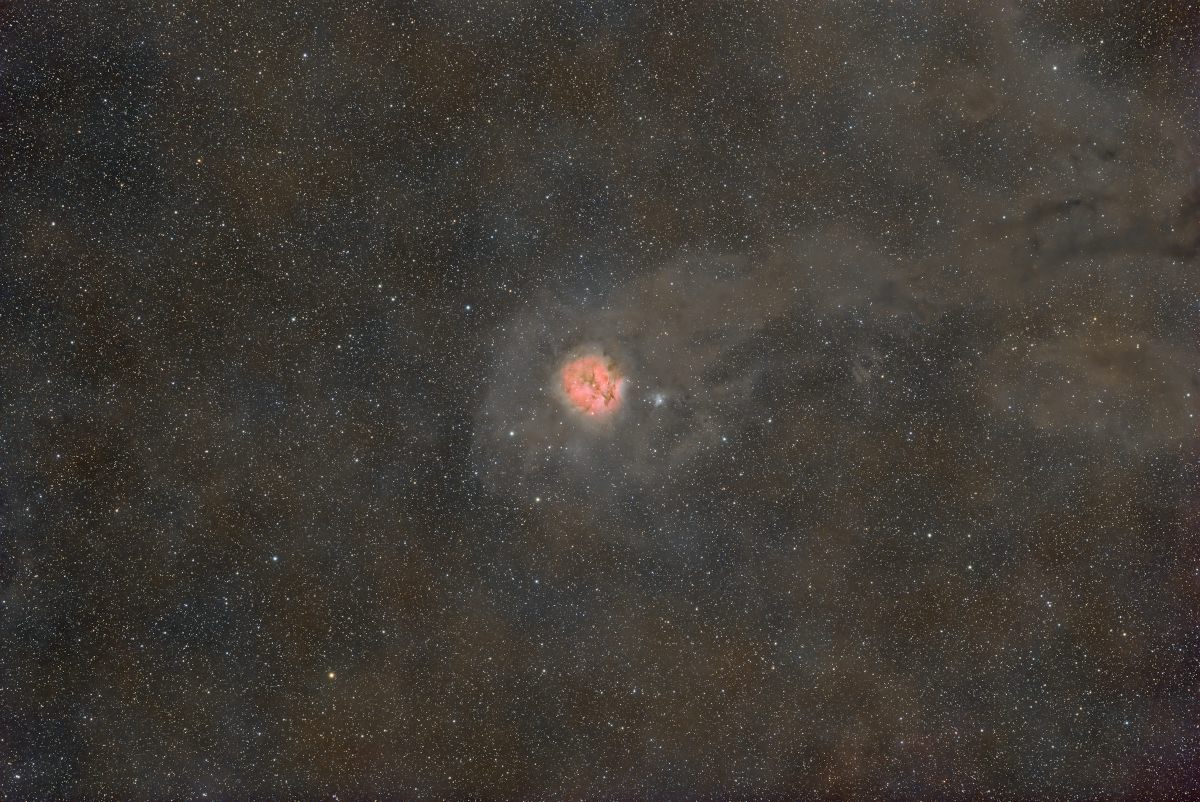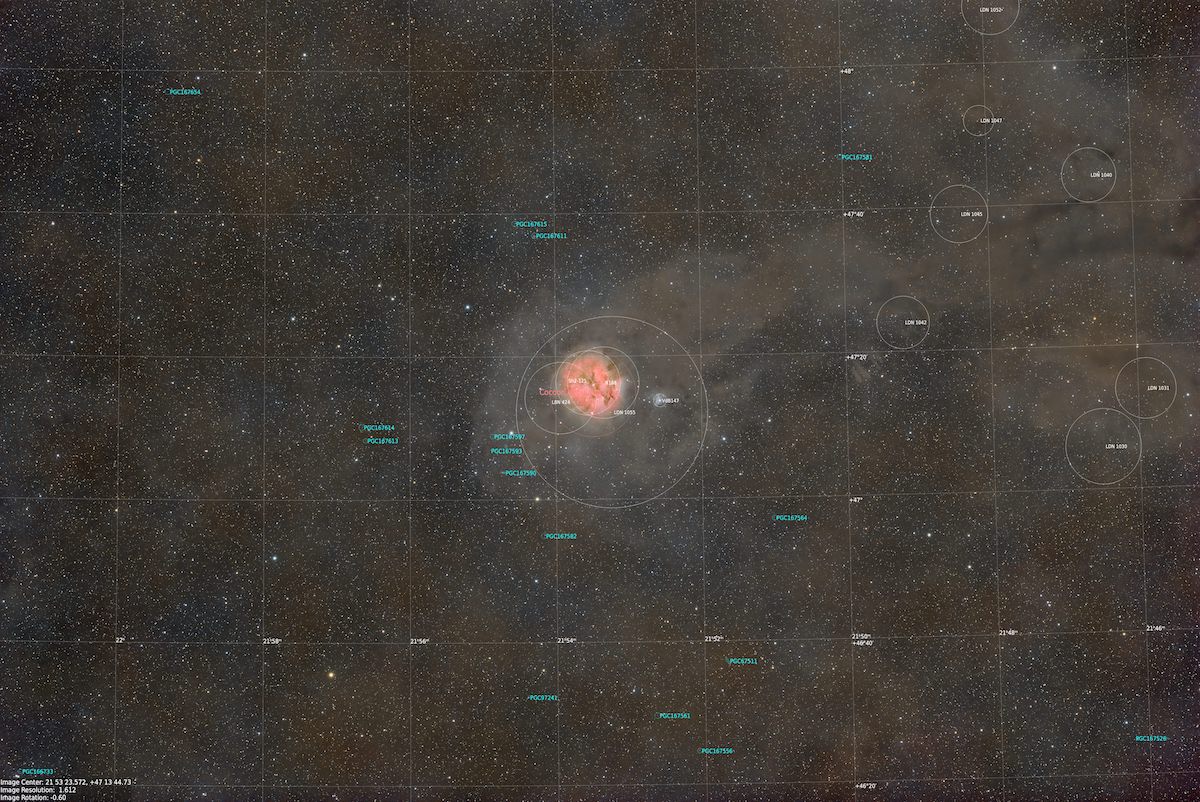IC 5146, The Cocoon Nebula
Published 10 Feb 25
About this object
IC 5146, also known as Sh2-125 and Barnard 168 and the Cocoon Nebula is a reflection and red emission nebula in the Constellation Cygnus. The designation IC 5146 actually refers to a cluster of mag 9.5 stars within the nebula itself with the nickname Cocoon nebula referring to the brighter red emission nebula. The nebula is seen emerging from a dusty cocoon of brighter dust which extends westward several degrees. The star in the center of the nebula is BD+46 3474, and is magnitude 9.7. It's a yellow main sequence star which is part of a double or multiple star system. The emission part of the cocoon is also a star forming region with many "Young Stellar Objects" or stars that are currently forming within the dust and emission. Very close to the west of the Cocoon you can see the blue reflection nebula VdB 147. The brighter star near the center of this reflection nebula is BD+46 3421, an unusual Herbig Ae/Be star. The surrounding area around the Cocoon is also full of fainter molecular dust as can be seen as faint brownish patches. Quite a few faint and small PGC galaxies also are scattered about the field of view. Clicking on either image will provide a full resolution view. The Cocoon nebula is estimated to by 7.5 light years wide and 2.500 light years distant.
This image was taken in August 2024 from my home in bortle 5-6 skies.
IC 5146, also known as Sh2-125 and Barnard 168 and the Cocoon Nebula is a reflection and red emission nebula in the Constellation Cygnus. The designation IC 5146 actually refers to a cluster of mag 9.5 stars within the nebula itself with the nickname Cocoon nebula referring to the brighter red emission nebula. The nebula is seen emerging from a dusty cocoon of brighter dust which extends westward several degrees. The star in the center of the nebula is BD+46 3474, and is magnitude 9.7. It's a yellow main sequence star which is part of a double or multiple star system. The emission part of the cocoon is also a star forming region with many "Young Stellar Objects" or stars that are currently forming within the dust and emission. Very close to the west of the Cocoon you can see the blue reflection nebula VdB 147. The brighter star near the center of this reflection nebula is BD+46 3421, an unusual Herbig Ae/Be star. The surrounding area around the Cocoon is also full of fainter molecular dust as can be seen as faint brownish patches. Quite a few faint and small PGC galaxies also are scattered about the field of view. Clicking on either image will provide a full resolution view. The Cocoon nebula is estimated to by 7.5 light years wide and 2.500 light years distant.
This image was taken in August 2024 from my home in bortle 5-6 skies.
Image Details
- Optics : Stellarvue SV80s Carbon Fiber refractor @f6 480mm FL
- Mount: ZWO AM5
- Camera: ZWO ASI2600 MC pro
- Filters: None
- Exposure (min): RGB 622min 10 hrs 22min, 1x1 binning
- Automation Control: ASI Air
- Guiding: ASI 120mm mini
- Processing Software: PixInsight,
- Location: Stark Bayou Observatory, Ocean Springs, MS
- Sky: Typical SQM 19.6-20.1, Bortle 5, Suburban
- Date: 6-10 August 2024








